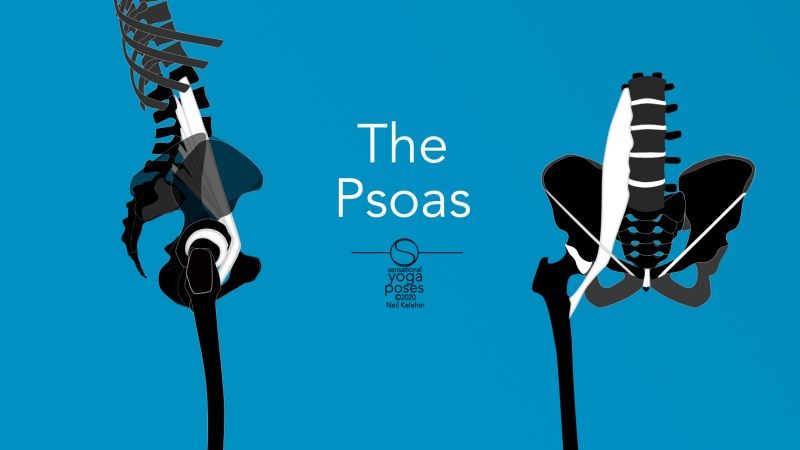The psoas
Understanding it, stretching it, feeling it and using it.
There is a lot of overlap (and confusion) between the hip joint and the lower back. One muscle that works on both is the psoas.
With respect to the lumbar spine the psoas could be thought of as a stabilizer. The difficulty with the psoas is feeling it. And so perhaps one of the easiest ways to feel the psoas is indirectly via muscles that oppose it. It's the opposition to the psoas that helps the psoas to stabilize the lumbar spine.
Note that this is true of any muscle. If you use opposing muscles against each other you create stability. (And you also get "control").
You can also think of the psoas as a hip flexor (and hip stabilizer).
One of the myths about the psoas is that you shouldn't do straight leg sit ups because of the shear force it exerts on the lumbar spine.
In psoas anatomy you can read about how that generally isn't the case. You can also learn the points of attachment of the psoas to the lumbar vertebrae and lowermost thoracic vertebrae.
Note, just because I say that straight leg sit ups are generally fine, it doesn't mean that you should just jump in and do them, particularly if you've not been doing exercise for a while or you already have low back pain!
Approach straight leg sit ups slowly and smoothly and gradually, and if you notice pain in you lower back, then stop.
Figure out what you need to train so that you can do straight leg sits ups without pain.
An interesting relationship that I learned about in a Richard Freeman workshop is that between the psoas, the lowest pair of ribs (the 12th ribs) and the kidneys. Understanding this relationship makes it easier to learn how to lengthen the low back and even provides a way of stretching the psoas. Find out more in psoas Major anatomy
Stretching the psoas takes you through an exploration of the psoas while standing and offers some explanations for why your psoas might be tight (and what you can do about it instead of just stretching it.)
All of that and more in Stretching the psoas
Psoas muscle includes a lot of practical tips for using the psoas in various yoga poses, mainly forward bends, back bends and spinal twists.
As for releasing the psoas, Psoas release talks about the differences between stabilizing the core versus stabilizing the hip bone. To release the psoas, the suggestion here is to stabilize the hip bone. And it includes a detailed description of how to do that while standing.
Want to learn how to feel your psoas (and control it)? Understanding the psoas includes an exercise for that. It's actually an exercise for activating your psoas, but if you can activate it, you can also learn to feel it.
It also offers some speculation on how the psoas might self-adjust to give itself the necessary length or room to activate effectively.
The psoas is a hip flexor (and a lumbar stabilizer). One way to stretch the psoas is with a Reclining Psoas Stretch. Part of what makes this stretch interesting is that it is based on the understanding that the psoas connects to the 12th set of ribs.
You can also stretch the psoas with a Standing Psoas Stretch as well as these Standing psoas stretch variations.
One technique for stretching the psoas is to stretch it actively as in these Active Psoas Stretches.
Another method for stretching the psoas includes learning to add "inner tension" to the lumbar spine. This is covered in psoas stretches.
Yet another technique for effectively stretching the psoas is to keep the abs engaged, in particular the obliques. This is covered in psoas stretches-1.
Published: 2011 12 13
Updated: 2020 11 04



